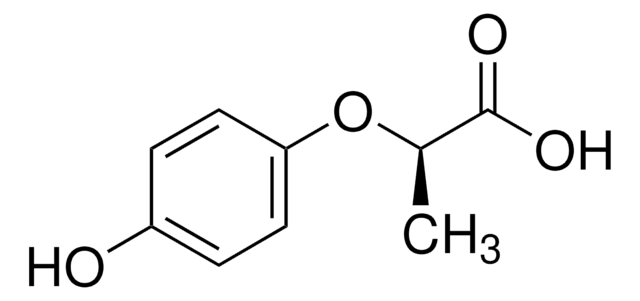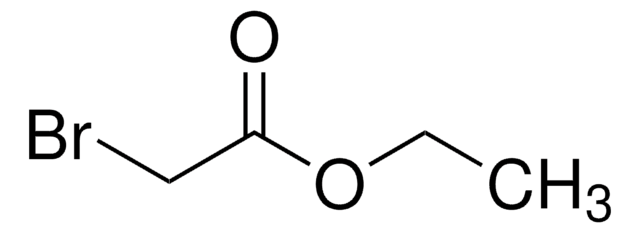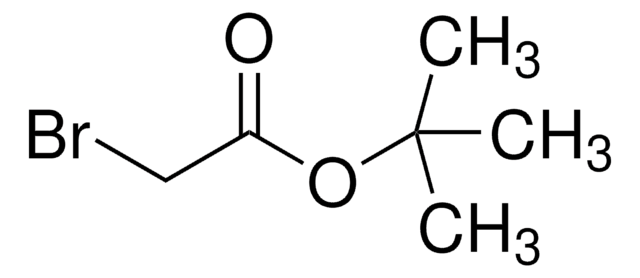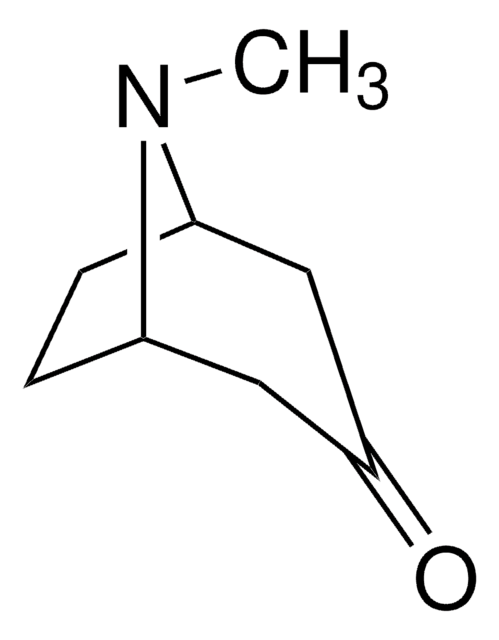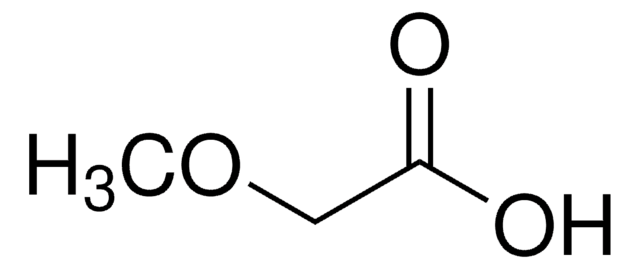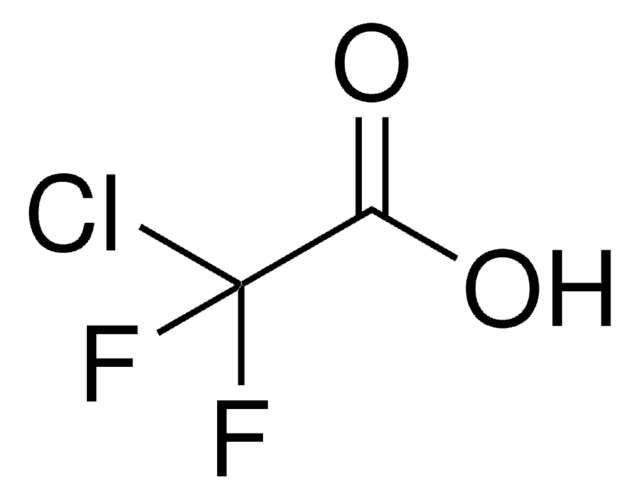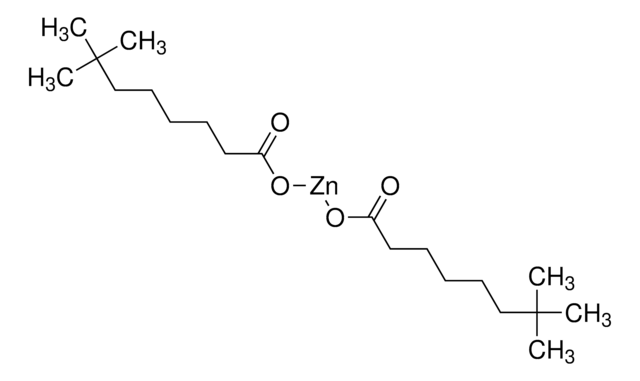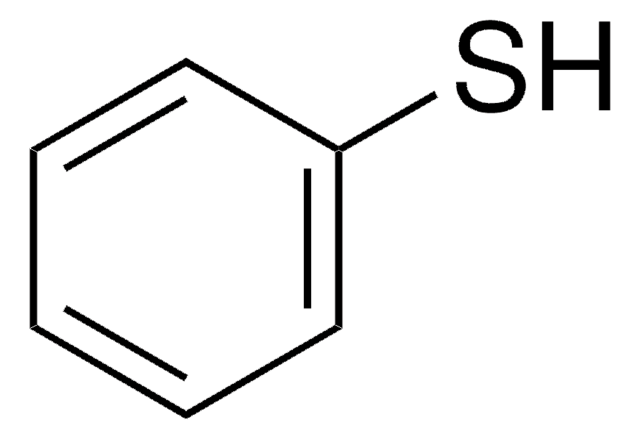439398
(4-Hydroxyphenoxy)acetic acid
98%
Se connecterpour consulter vos tarifs contractuels et ceux de votre entreprise/organisme
About This Item
Formule linéaire :
HOC6H4OCH2CO2H
Numéro CAS:
Poids moléculaire :
168.15
Numéro CE :
Numéro MDL:
Code UNSPSC :
12352100
ID de substance PubChem :
Nomenclature NACRES :
NA.22
Produits recommandés
Niveau de qualité
Pureté
98%
Pf
154-157 °C (lit.)
Chaîne SMILES
OC(=O)COc1ccc(O)cc1
InChI
1S/C8H8O4/c9-6-1-3-7(4-2-6)12-5-8(10)11/h1-4,9H,5H2,(H,10,11)
Clé InChI
PKGWLCZTTHWKIZ-UHFFFAOYSA-N
Description générale
(4-Hydroxyphenoxy)acetic acid along with formaldehyde ammonium salt forms a polyaromatic anionic compound RG-13577. RG-13577 mimics the synthetic heparin and specifically binds to the vascular smooth muscle cells (SMCs) and inhibits their proliferative growth. In the molecules of (4-hydroxyphenoxy)acetic acid, the carboxyl groups are held together by R22(8) hydrogen bonds.
Mention d'avertissement
Warning
Mentions de danger
Conseils de prudence
Classification des risques
Eye Irrit. 2 - Skin Irrit. 2 - STOT SE 3
Organes cibles
Respiratory system
Code de la classe de stockage
11 - Combustible Solids
Classe de danger pour l'eau (WGK)
WGK 3
Point d'éclair (°F)
Not applicable
Point d'éclair (°C)
Not applicable
Équipement de protection individuelle
dust mask type N95 (US), Eyeshields, Gloves
Faites votre choix parmi les versions les plus récentes :
Déjà en possession de ce produit ?
Retrouvez la documentation relative aux produits que vous avez récemment achetés dans la Bibliothèque de documents.
(4-Hydroxyphenoxy) acetic acid.
Byres M and Cox PJ.
Acta Crystallographica Section E, Structure Reports Online, 63(6), o2931-o2931 (2007)
Yun-Loung Lin et al.
Bioorganic & medicinal chemistry letters, 12(13), 1709-1713 (2002-06-18)
An epoxybenzoquinone, 4-hydroxyphenoxypropionic acid, and 2-hydroxy-3-phenyl-3-butenoic acid derivatives have been designed, synthesized, and evaluated for in vitro inhibition activity against 4-hydroxyphenylpyruvate dioxygenase (4-HPPD) from pig liver by the spectrophotometric enol-borate method. The biological data demonstrated that neither epoxybenzoquinone ester nor
M Benezra et al.
Journal of cellular biochemistry, 81(1), 114-127 (2001-02-17)
A synthetic heparin-mimicking polyaromatic anionic compound RG-13577 (polymer of 4-hydroxyphenoxy acetic acid and formaldehyde ammonium salt, Mr approximately 5800) exhibits specific binding to vascular smooth muscle cells (SMCs) and inhibits their proliferative response to growth promoting factors. Receptor binding of
B Palotás et al.
Analytical biochemistry, 179(2), 288-290 (1989-06-01)
A fast and sensitive spectrophotometric method has been developed to measure the level of hydroxylated by-products (p-hydroxyphenoxyacetic acid and p-hydroxypenicillin V) in penicillin V fermentations. The method is based on a color reaction of the above-mentioned phenolic by-products with nitrous
Choolakadavil Khalid Najeeb et al.
Colloids and surfaces. B, Biointerfaces, 102, 95-101 (2012-09-26)
Individual dispersion of single-walled carbon nanotubes (SWNTs) in biocompatible media is of particular interest for diverse biomedical and nanomedicine applications. Herein we present, for the first time, a neutral pH water-soluble chitosan derivative, chitosan-hydroxyphenyl acetamide (CHPA), prepared by functionalizing the
Notre équipe de scientifiques dispose d'une expérience dans tous les secteurs de la recherche, notamment en sciences de la vie, science des matériaux, synthèse chimique, chromatographie, analyse et dans de nombreux autres domaines..
Contacter notre Service technique